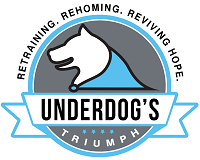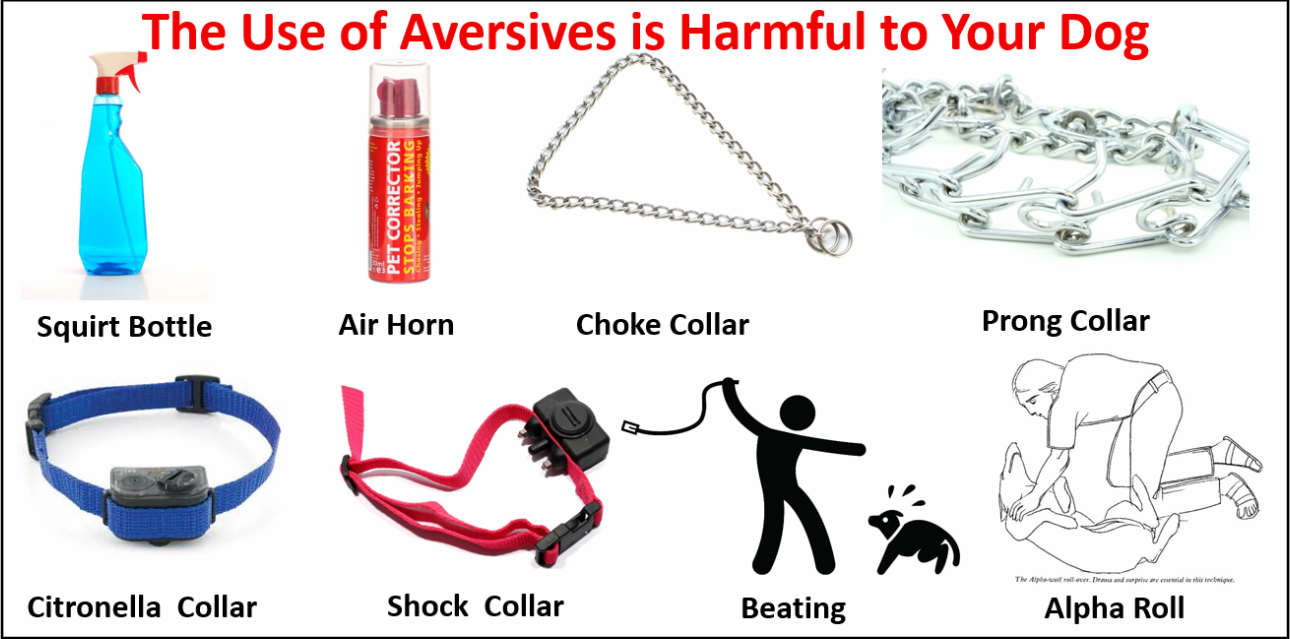
This past week we had three new arrivals to the Underdog’s Triumph family. We welcome the little standing husky, our politely sitting boston and our happy-go-lucky terrier. Why would a training center need some fake stuff dogs you might ask? Reactivity – that’s why!
Reactivity is a term I use for dogs who are experience some intense emotion that causes them to react in what we would call an inappropriate manner. A reactive dog might lunge or bark, sometime they might nip or bite, some if pushed to far can even kill. Dogs who are reactive, lack the skills of knowing alternative behaviors when they get into this emotional state – which is typically cause by fear and sometime over excitement.
The interesting thing is that dogs typically don’t start out reactive, they start with smaller, oftentimes overlooked behaviors like avoidance or lip licking (stress signals) and progress upward to these overt displays of behavior which are quickly noticed by other dogs, their owners and other people. And as I’ve written about before, dogs do what works. They don’t know right or wrong, they just repeat what was successful in the past or they try something new. If overt displays of a crazy dog at the end of the leash work to get what they want (most often the other dog/person to go away), then they’ll continue to do that next time.
Quick note, if you have a reactive dog, I’d recommend getting professional help from an educated dog trainer. You can check out my blog posts here and here on how to find a good one. Reactivity training requires a keen sense of dog body language and observation on the owner’s part and is greatly aided by a force free professional helping them spot what their dog is trying to tell them.
For dog to dog reactivity training, we would aim to teach the other dog an alternative behavior and then reward that alternative behavior more than what the dog would have gotten simply by lunging or barking at the other dog. But for those of you who have reactive dogs, have you ever tried to ask your dog to do any command while they are flipping out and bouncing all over at the end of the leash? It just doesn’t work. When the dogs get into that reactive state of mine, I always like to say their ears go closed and their brain turns off. They are in such an emotional state that they can’t even process that you’re trying to get them to do something else.
So what’s the trick? The trick is to start working at a great enough distance before they get into the crazy flipping out stage. The part when they first notice the other dog or person and yet the dog/person is far enough away they don’t feel threatened. Then we have to practice those new techniques. Practice not only helps the human learn skills like how to hold a leash correctly, or how to recognize when their dog is in the beginning stages of becoming reactive, but it helps the dog as well.
Using these fake stuffed dogs as practice offers the owners and their dogs the easiest possible scenario. These fake dogs don’t move, they don’t bark, they come free of an owner and yet they still look like a dog. With a stationary “dog” the owners and their dogs can practice different styles of scenarios, like walking up to a dog, walking around another dog, walking away from the dog, all the while knowing that if their dog were to get loose no one would be harm, and knowing the fake dog will always stay right where we left them.
My own adopted dog Luna came as a feral dog (meaning she had never really been around other people). She started with a 75 foot required distance from the another person or she would flail and panic at the far end of the leash trying to get away from them. Yesterday, almost two years after I adopted her, she passed by a jogger with only a five foot distance between us and him.
Reactivity training takes time, effort and consistency for the dog to begin to learn a new behavior when meeting a dog. It also takes a lot of patient and practice on the owners part as well. Overtime the dog (and the human) will start naturally falling back to these new behaviors and you’ll be able to get closer and closer to the other dog or person without having them react.
If you need help with reactivity, feel free to reach out, we can help you work with your dog on reactivity training or we can help you find someone in your area qualified to do the same. Trust me though, these three little amigos are up to the challenge and look forward to helping many other dogs and their humans in the future!

